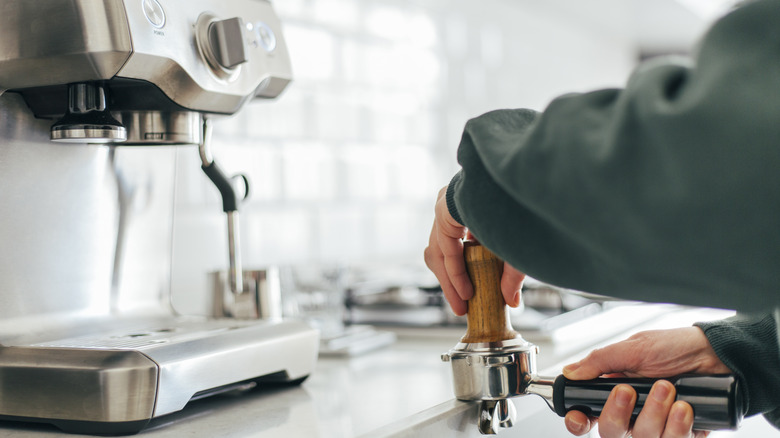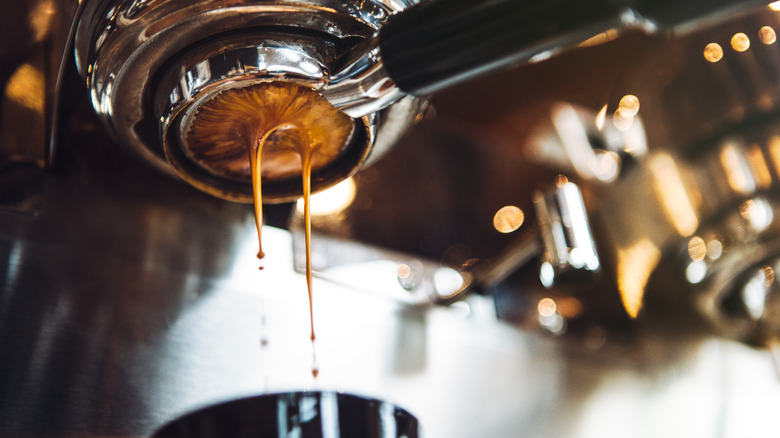The Best Homemade Espresso Relies On Your Ability To 'Temperature Surf'
While coffee shops crank out espresso-based drinks with apparent ease, the process requires delicate fine-tuning. If you purchase an espresso machine for home use, all the factors may feel overwhelming. From the utilized beans to water, tamping, extracting time, and more, there's lots of room for error when making espresso at home.
To add to the confusion, some hindrances are specific to the device. And if you're employing a budget espresso machine — that's a model under $1000 — pay special attention to the resultant coffee temperature. It's all dependent on the boiler system, the mechanism responsible for heating water. To optimize both cost and space, home machines often share a boiler for both coffee extraction and milk steaming. However, these processes necessitate different temperatures: boiling for the milk and closer to 200 degrees Fahrenheit for the espresso. Plus, certain semi-automatic machines may not heat water well enough to begin with. As a result, the espresso shot often comes out too cold or hot, impacting its flavor.
So, turn to temperature surfing to extract the perfectly-flavored cup. Attune to the boiler heating process and pull shots while the mechanism is at the optimal phase of the heating cycle. Learn the boiler's grooves, and your efforts will be rewarded with the best homemade brew.
Familiarize with your espresso machine's boiler process for temperature control
The precise specifics of temperature surfing depend on the exact internal machinery and will vary based on the model. It's most relevant to single boiler makers without controlled temperature regulation. It's easiest if the machine possesses a system noting whether water is being heated, although the cycle can be estimated.
It's critical to pull espresso at a time when the boiler's in the ideal range, between 194 to 205 degrees Fahrenheit. If the boiler's been running too long, the water's likely boiling and too hot. Conversely, if it's just started working, it's too cold. So restart the system from zero, let the boiler cool, and then cycle it to optimal coffee extraction temperature. This zone can be discovered through several iterations of tasting and temperature-noting while utilizing a timer.
Between rounds, flush through the group head sans coffee to balance out the process. Keep in mind that roast style and specific beans necessitate varying temperatures, so stick to one coffee until the zone's discovered. While demanding, it's a crucial step — such pedantic brewing will yield the tastiest espresso with a domestic machine.

